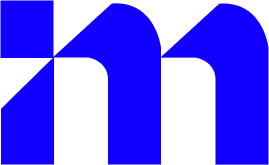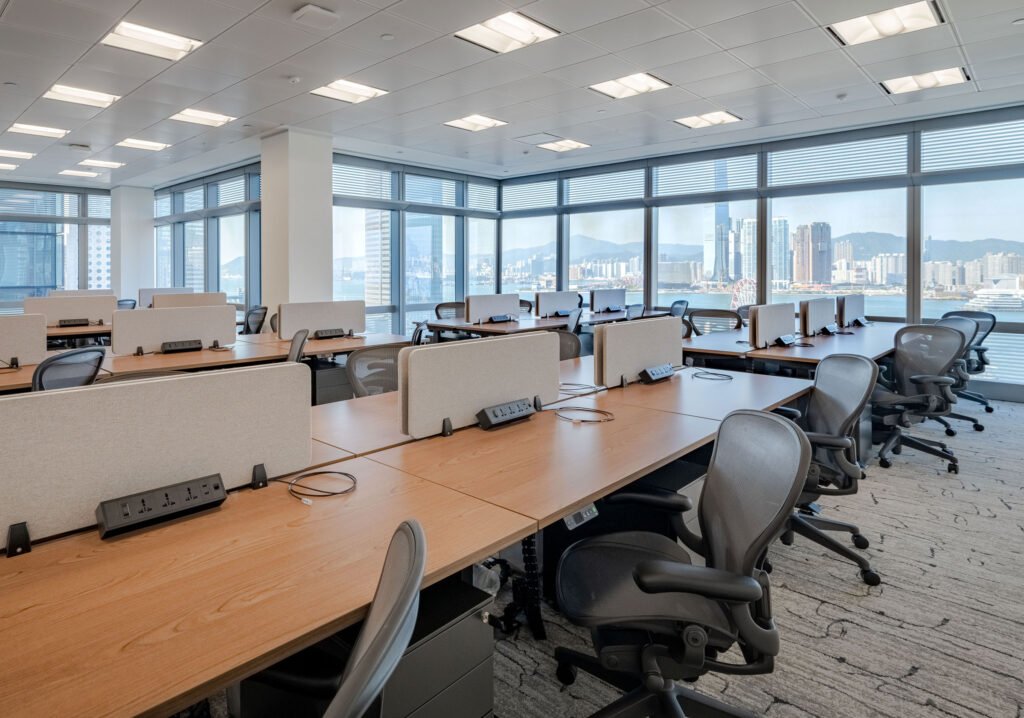In 2025, Facebook Ads (now Meta Ads) remain one of the most powerful tools for digital marketers. However, when working with expensive products like luxury items, high-end Saas, high-ticket coaching programs or real estate the game is dramatically different. You’re not looking for cheap clicks or impulse-based purchases; your aim is to establish trust and demonstrate to potential buyers that you are guiding them on the most efficient journey towards a purchase.
When selling high-ticket offerings, trust is everything, agencies are deploying data-driven, full-funnel Meta ad strategies to consistently hit 3× ROAS or more. Learn about proven frameworks for high-ticket funnels.
So how do top advertisers consistently achieve 3x ROAS or above when selling premium offerings? The answer is through an intelligent, data-driven Facebook ads strategy for high-ticket sales. In this guide, we will outline exactly how to craft that strategy step-by-step, using proven strategies that are working right now in 2025.
Whether you are running Facebook ads for ecommerce, dropshipping luxury items, or scaling a coaching funnel, we hope that this article helps you improve your Meta ads to increase profitable impact at scale.
Understanding the Challenge of Selling High-Ticket Products via Facebook Ads
Let’s be real, selling high-ticket products on Facebook is nothing like running a promo for a $20 phone case or a trendy t-shirt. You’re not fishing in shallow waters here; you’re trying to win over people who are about to drop hundreds or even thousands of dollars on something they’re probably still thinking twice about. And trust me, that changes everything.
Longer Buying Cycles
High-ticket buyers don’t just see one ad and go, “Yep, here’s my credit card.” Nope. They’re slower, more skeptical, and they need to feel something real. It often takes 7 or more touchpoints, emails, videos, testimonials, remarketing ads, before they even consider pulling the trigger. If your strategy doesn’t include value-led nurturing and multiple retargeting layers, you’re probably losing them halfway through the scroll.
Trust Barriers
Now add skepticism to the mix. A $2,000 product in their Facebook feed? The first reaction is usually, “Is this a scam?” or “Too good to be true?” That’s why social proof, case studies, success stories, certifications, isn’t just nice to have. It’s mandatory. If your audience doesn’t trust you, clicks mean nothing.
Higher CPMs & CPCs
Targeting affluent or niche buyers comes at a cost. You’ll notice your CPMs and CPCs shooting up, especially if you’re in a competitive space like coaching, wellness, or B2B SaaS. Without a well-built Facebook funnel tailored to high-ticket conversions, your ad spend can disappear faster than you’d like, with very little to show for it.
Establishing credibility in luxury and SaaS markets starts with the right dashboards—check out how white-label reporting tools allow agencies to deliver sleek, branded performance reports.
The Need for a Full-Funnel Strategy
This isn’t about getting clicks. It’s about building a journey, from cold interest to warm lead to red-hot buyer. A full-funnel strategy isn’t optional; it’s your lifeline. You need to design an intentional path where every ad and every interaction moves your audience closer to saying, “Okay, I’m in.”
Pre-Ad Strategy: Knowing Your High-Ticket Audience
Before you throw money into Facebook ads hoping for that dream client, pause, and ask yourself: Who exactly am I talking to? Because when you’re selling high-ticket products, blasting ads to “everyone” is a recipe for wasted budget and zero conversions. You’re not looking for casual browsers, you’re after people with the wallet, the will, and the readiness to buy premium.
Use Facebook Audience Insights (the smart way)
Start with tools you already have access to, Facebook Audience Insights and Meta’s Business Suite. They’re often underused but incredibly powerful. Look for patterns: What’s their age range? Do they live in major cities? Are they business owners, frequent travelers, or into high-end hobbies? These are the clues that lead you to a high-ticket buyer.
Build Real Buyer Personas (not just marketing fluff)
Now, go deeper. Create detailed personas for your audience. What keeps them up at night? What do they value? Are they more logic-driven or emotionally motivated? If you’re selling a $5,000 course or a luxury service, you need to speak to their pain points and aspirations with precision, not vague buzzwords.
Segment Like a Pro
Not all leads are created equal. Some people are just discovering you (cold), some are interested but hesitant (warm), and a few are on the edge, ready to swipe their card (hot). Tailor your messaging accordingly. Use Facebook retargeting to move them step-by-step, not with pressure, but with clarity, relevance, and timing.
Because in high-ticket marketing, it’s not about shouting louder, it’s about speaking to exactly the right person, at exactly the right moment. When you do that, your conversions don’t just go up, they start to feel almost effortless.
Crafting an Offer That Converts for High-Ticket Products
High-ticket buyers rarely convert on a cold click. They need a compelling reason to take the next step, and that means your offer must be more than just “Buy Now.” To drive 3X ROAS or more, your offer must build trust, demonstrate value, and lower perceived risk.
Entry Offers: Give Before You Ask
Instead of pushing for the sale upfront, provide an entry point that creates value. Examples include:
- Free consultations or discovery calls
- Mini-course or webinar
- Downloadable lead magnets (guides, checklists)
- Case studies showing real-world results
These offers create a low-friction gateway into your funnel while positioning you as an expert.
Use Social Proof
No one wants to be the first to buy a high-ticket product. Integrate social proof directly into your ads and landing pages, client testimonials, video success stories, influencer shoutouts, or media features all reduce hesitation and build credibility.
Create Scarcity & Urgency
Add limited-time bonuses, countdown timers, or limited spots to increase urgency. For example: “Only 3 VIP spots left this month” or “Free bonus ends in 24 hours.”
When you craft your offer with conversion psychology in mind, your Facebook ads don’t just get clicks, they generate high-value actions that move prospects through your sales funnel for high-ticket products.
Ad Creative Best Practices for High-Ticket Products
Let’s be honest: in 2025, Facebook ads for high-ticket products aren’t just about pretty pictures and flashy headlines. Your creatives have a bigger job now. They need to do the heavy lifting of building belief, of taking someone from “Is this for real?” to “I need this in my life.” And that only happens when your visuals and words hit the right emotional chords.
Use Visuals That Actually Look High-Ticket
If you’re selling something premium, your ads need to look and feel premium too. That means skipping overplayed stock photos and investing in visuals that show authenticity, transformation, and real-world results. Think lifestyle shots, behind-the-scenes video, or even client success reels. Your creative should mirror the value of what you’re offering, otherwise, there’s a disconnect that kills trust before you even get started.
Sell the After, Not the Product
When people buy high-ticket offers, they’re not just buying a product or service, they’re buying a better version of their life. Your copy and visuals should lean into that. Don’t list features. Paint the transformation. Show them where they’ll be once they’ve said yes. If you’re a coach, that might be a confident client crushing their goals, not a screenshot of your Zoom calendar.
Ad Copy That Follows a Story Flow
Here’s a simple structure that works wonders for high-ticket ad copy:
- Pain: Start by showing them you understand what they’re struggling with.
- Value: Introduce your offer as the bridge from problem to solution.
- Authority: Drop the receipts, testimonials, credentials, real results.
- CTA: End with a clear and specific action step (not just “Learn More”). Try something like “Apply for your free 15-min call” or “Watch the full success case study.”
Always Be Testing
No matter how great your copy or visuals are, you’re not your audience, so test everything. Run A/B tests with different tones, ad lengths, and formats (yes, video vs. image still matters). You’ll be surprised how even small shifts can dramatically improve performance.
Because here’s the thing: when you treat your Facebook ad creatives as living experiments, not static assets, you unlock real scalability. And in the high-ticket world, that means going from inconsistent trickles to predictable, premium conversions.
Funnel Strategy to Achieve 3X ROAS
A direct-to-sale ad rarely converts in the high-ticket space. Achieving 3X ROAS on Facebook ads requires a carefully designed full-funnel strategy tailored to guide users through awareness, consideration, and decision-making phases. This multi-touch journey increases trust, builds familiarity, and warms up leads before asking them to convert.
Top of Funnel (TOF): Awareness and Education
At the TOF stage, your goal is brand positioning and value-driven education. Use informative videos, expert insights, or educational reels to introduce your offer. You’re not selling yet, you’re establishing relevance and trust. Target cold audiences with content that speaks to their pain points and aspirations.
Example TOF content:
- “Why 90% of [target audience] struggle with [problem]”
- “3 myths about [industry solution] you need to stop believing”
Middle of Funnel (MOF): Lead Nurturing and Retargeting
This is where warm leads begin evaluating your solution. Offer lead magnets, free resources, or access to private webinars. Use retargeting campaigns to stay top-of-mind. Focus on educating and moving prospects closer to action by offering value and social proof.
Effective MOF content:
- Video testimonials
- Case studies
- Retargeted carousel ads featuring value-driven blog posts or FAQs
Bottom of Funnel (BOF): High-Intent Conversion
At the BOF stage, it’s time to drive urgency and close. Use scarcity tactics, limited-time offers, or exclusive bonuses to convert warm prospects. Your retargeting ads here should have a clear, singular CTA with strong authority indicators.
BOF example:
- “Only 5 slots left for our 1-on-1 coaching program”
- “Apply now, this onboarding window closes in 48 hours”
An optimized high-ticket Facebook funnel strategy ensures your ad spend is converting across all stages. By aligning creatives and CTAs to each phase and retargeting high-value buyers at the right time, you significantly increase the likelihood of generating 3X ROAS and higher from your Meta ad campaigns.
Budget Allocation & Scaling Without Killing ROAS
Scaling high-ticket Facebook ads isn’t just about throwing more money into your campaigns and hoping for the best. It’s more like walking a tightrope, balance is everything. Push too hard, too fast, and the algorithm panics. Your costs spike, your ROAS drops, and suddenly you’re spending five figures for a few lukewarm leads.
Start Small, But Smart
Before you think about scaling, test intentionally. Start with a budget that’s enough to give you data, but won’t burn your wallet, say ₹500 to ₹2,000/day or $20 to $100/day. This test phase is all about figuring out what works, what creatives are clicking, what audiences are resonating, and whether your offer even converts.
Focus on metrics that matter: ROAS, click-through rate (CTR), cost-per-click (CPC), and conversion rate. This is your baseline.
Scale with a Plan, Not Emotion
Found a campaign that’s consistently pulling in 3X ROAS? Awesome. Now resist the urge to double the budget overnight. Instead, use automated rules to scale with intention:
- If ROAS stays above 3 for 3 days → bump budget up by 20%
- If ROAS dips below 1.5 → pause, tweak, or rework that ad set
These gradual tweaks let Facebook’s algorithm adjust without resetting the learning phase, which is where a lot of people mess up.
CBO vs. ABO: The Never-Ending Debate
When it comes to allocating budget, CBO (Campaign Budget Optimization) usually works better for high-ticket ads. It lets Meta decide which ad sets deserve the most budget in real-time, based on performance. That’s great for scale. But during the testing phase, some advertisers still prefer ABO (Ad Set Budget Optimization) for tighter control.
Here’s the real answer? Use both, ABO when you’re still figuring things out, and CBO when you’re ready to scale what’s already working.
Because in high-ticket marketing, the goal isn’t just to spend more. It’s to scale profitably, without killing the thing that made your campaign work in the first place.
Retargeting and Lookalike Audiences for High-Ticket
Retargeting and lookalike strategies are critical for converting high-ticket leads. Unlike low-ticket items, high-ticket purchases require multiple engagements and a trust-building sequence. An effective retargeting structure paired with pixel-informed lookalike audiences significantly improves both conversion rates and ROAS.
Retargeting = The Real MVP
Think of retargeting as your second, third, and fourth chance to make an impression. Someone visits your landing page but doesn’t book a call? Serve them a video testimonial. They watched your webinar but didn’t apply? Hit them with a limited-time bonus offer. This sequence of micro-engagements builds trust and gently moves them closer to conversion.
But retargeting alone won’t fill your funnel.
Build Lookalike Audiences from Real Buyers
Once you’ve got some real conversions, it’s time to scale smart. Start by building a 1% Lookalike Audience (LLA) based on people who’ve actually purchased your high-ticket offer. These are your algorithmic soulmates, people with behaviors and patterns similar to your best customers.
Then gradually test broader segments: 2%, 5%, even up to 10% LLAs. As you scale, this helps maintain conversion quality without ballooning your CPCs.
This isn’t guesswork. It’s data-powered targeting using your Facebook Pixel, tracking everything from “View Content” to “Initiate Checkout” to final purchases.
The result? You’re no longer guessing who to show ads to. You’re reaching warm, high-propensity buyers who look and act like your current best clients. And that’s how you maximize ROAS without burning your budget, especially in the high-ticket space.
Analyzing & Optimizing for Maximum ROAS
To consistently achieve and maintain 3X ROAS or more on Facebook ads, you must engage in continuous performance analysis and iterative optimization. Without data-backed decisions, even the best creative and strategy can underperform.
Focus on Key Facebook Ad Metrics
Monitor these essential Facebook ad metrics that matter in 2025:
- ROAS: Your primary KPI for revenue efficiency
- CTR (Click-Through Rate): Indicates relevance and engagement
- CPC (Cost Per Click): Helps manage cost-efficiency
- Frequency: Avoid ad fatigue; aim to keep this below 3
- Conversion Rate: The final indicator of landing page and funnel performance
These metrics together paint a clear picture of where your campaign is thriving, or leaking budget.
Set Clear ROAS Benchmarks
Before launching, define performance thresholds. For example:
- ROAS ≥ 3 = Scale
- ROAS 1.5–2.9 = Optimize
- ROAS < 1.5 = Pause/Test
Use these benchmarks to enforce disciplined decision-making.
Use Industry-Standard Tracking Tools
To optimize Meta ads for higher ROAS, go beyond Ads Manager. Integrate tools like:
- Triple Whale – Ecom attribution tracking
- Hyros – Advanced funnel and call tracking
- Google Analytics 4 (GA4) – Multi-channel behavior analysis
With the best tools to track ROAS, you can make timely optimizations: scale your top 20% of performing ads, and cut the bottom 80% that drain your budget. Precision and fast iteration are what separate profitable campaigns from wasteful ones.
Real Case Study: 3X ROAS for a High-Ticket Coaching Brand
A coaching business offering a $2,500 executive leadership program sought to generate consistent client bookings using Facebook ads. They implemented a full-funnel campaign strategy that transformed their lead generation process.
Initial Setup
- Targeted high-level professionals using interest-based and lookalike audiences
- Created an awareness video ad focused on workplace stress and leadership gaps
- Used a lead magnet (free leadership audit PDF) to collect qualified leads
Ad Strategy
- TOF ads educated the audience on performance challenges
- MOF used testimonials from past clients to establish trust
- BOF retargeting offered a limited-time discount for early enrollment
Scaling and ROAS
With performance benchmarks set, the brand used CBO to gradually scale winning campaigns by 20% per week. Tracking was handled through Hyros, identifying that video testimonials drove the highest conversions.
Final Outcome
Over 8 weeks, the campaign generated $45,000 in revenue from $15,000 in ad spend, achieving a 3X ROAS while building a scalable funnel for future cohorts.
This real Facebook ads ROAS case study proves that with the right funnel, creative, and optimization tools, even premium coaching programs can thrive on Meta’s platform.
Conclusion
Getting to 3X ROAS on Facebook ads, especially when you’re selling high-ticket offers, isn’t some lucky fluke. It’s not about having the “perfect” ad or the trendiest hook. It’s about building a repeatable, data-driven system that actually makes sense, and works over time.
It starts with knowing exactly who you’re talking to. Go beyond vague demographics. Build real buyer personas that reflect your audience’s goals, fears, and decision triggers. Then, use that insight to create emotion-driven ad creatives that speak to transformation, not just features or specs.
Your campaign needs structure. A solid full-funnel setup (TOF, MOF, BOF) ensures you’re meeting people where they are, whether they’ve never heard of you or they’re almost ready to pull the trigger. Layer in smart retargeting, use your Facebook Pixel or Conversion API, and build lookalike audiences from actual buyers to scale with confidence.
But here’s the truth: even with all that in place, you’re not done. Winning with Facebook ads is about constant testing, small tweaks, and strategic scaling. Use tools like Ads Manager, Hyros, or GA4 to track what’s working and what’s draining your budget. Let the data drive your decisions, not guesswork or gut feelings.
And above all, be patient. High-ticket sales take time. But if you stick to the process, stay curious, and optimize with intent, every ad dollar you spend will start working harder for you.
FAQs
Q1. How much should I spend on Facebook ads for high-ticket products?
Start small, ₹500 to ₹2,000/day or $20 to $100/day during the testing phase. Once you hit your ROAS benchmark, scale gradually using Campaign Budget Optimization (CBO).
Q2. What’s the best campaign objective for high-ticket sales?
Use Leads or Conversions for coaching and service-based offers. For ecommerce, focus on Sales with pixel tracking events like “Initiate Checkout” or “Purchase.”
Q3. How do I know if my Facebook ads are working?
Track core KPIs: ROAS, CTR, CPC, frequency, and conversion rate. Use tools like Hyros, GA4, or Triple Whale for advanced tracking and attribution.
Q4. Can I run profitable ads without video content?
Yes, but video often outperforms static creatives for high-ticket offers due to its storytelling power. If possible, use testimonials or case studies in video format.
Q5. How long does it take to get 3X ROAS?
It depends on offer strength, audience quality, and optimization. With consistent testing and refinement, many brands see scalable results within 4–8 weeks.




